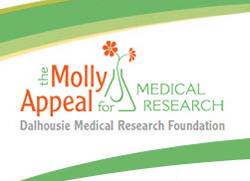Two decades ago, neurologist, professor and scientist Dr. Sultan Darvesh established the Maritime Brain Tissue Bank to study brains affected by AlzheimerтАЩs disease.
тАЬThe Maritime Brain Tissue Bank is an essential research facility that enables us to carefully store and study donated tissues, so we can understand the pathology of brain and nervous system diseases,тАЭ says Dr. Darvesh, appointed earlier this year as the ┬щ╢╣┤л├╜ Medical Research Foundation-Irene MacDonald Sobey Endowed Chair in Curative Approaches to AlzheimerтАЩs Disease.
His examinations in the years since have led him to the discovery of butyrylcholinesterase, or BChE, an enzyme that gathers around the plaques and tangles of brains in AlzheimerтАЩs patients. He and his team have since developed this finding into the worldтАЩs first technology for diagnosing AlzheimerтАЩs disease in a living personтАЩs brain.
тАЬThe only way to positively identify AlzheimerтАЩs disease has been to examine the patientтАЩs brain after death,тАЭ notes Dr. Darvesh. тАЬThis technology is a huge advance that opens the door to the possibility of diagnosing AlzheimerтАЩs early enough to stop the disease in its tracks.тАЭ
Expansion supported by the Molly Appeal
 This year marks the 35th annual . All proceeds for this yearтАЩs campaign will be used to expand the Maritime Brain Tissue Bank so it can store more data and more brain and spinal cord tissues. Dr. Darvesh and his team will rely heavily on the expanded tissue bank in their search for an agent to block BChE and prevent AlzheimerтАЩs disease from progressing.
This year marks the 35th annual . All proceeds for this yearтАЩs campaign will be used to expand the Maritime Brain Tissue Bank so it can store more data and more brain and spinal cord tissues. Dr. Darvesh and his team will rely heavily on the expanded tissue bank in their search for an agent to block BChE and prevent AlzheimerтАЩs disease from progressing.
But the expanded bank will also allow it to collect more data and tissues not just from donors with AlzheimerтАЩs disease, but from those with ALS, epilepsy, spinal cord injuries, multiple sclerosis, ParkinsonтАЩs disease and a host of other brain and nervous system diseases.
For example, Dr. Alon Friedman тАФ recently recruited to ┬щ╢╣┤л├╜ from Ben-Gurion University in Israel to become the new William Dennis Chair in Epilepsy Research тАФ will use the Maritime Brain Tissue Bank to learn more about how damage to blood vessels in the brain leads to such problems as epilepsy, mild-to-severe cognitive impairments and ParkinsonтАЩs disease. Dr. Friedman is already launching projects with local collaborators to develop new technologies for detecting and repairing vascular damage, and other brain changes, before the development of disease.
тАЬAn expanded brain tissue bank will be a powerful resource for the neuroscience research community,тАЭ says Dr. Victor Rafuse, a leading ALS researcher and director of the Brain Repair Centre. тАЬThe ability to identify chemical, molecular and structural changes in human brain and spinal cord tissues, at various stages of disease, provides tremendous insights into the disease processes and how they can be both detected and stopped.тАЭ
Learn more about the [PDF] and about .

